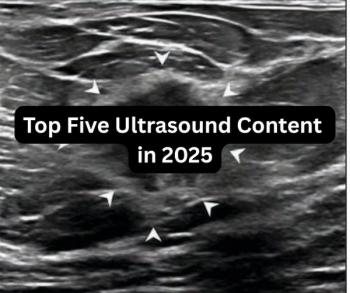
Novel PET Tracer Capable of Predicting Abdominal Aortic Aneurysm Rupture
Tested so far in animal models, this tracer could further the development of treatments for this life-threatening disease for which there are currently no therapies.
A new PET radiotracer can effectively target a biomarker associated with abdominal aortic aneurysms (AAA), potentially predicting when they will rupture.
This research, presented during the Society of Nuclear Medicine and Molecular Imaging 2021 Annual Meeting, is significant because using this radiotracer can improve AAA diagnosis and provide information that can further AAA treatment development. Currently there are no treatments for this largely asymptomatic, life-threatening degenerative vascular disease.
For more SNMMI 2021 coverage, click
The results of this study can go a long way in improving care for patients affected by AAA, investigators said.
“Right now, clinical diagnosis of AAA relies on anatomic measurements of AAA diameter, which is a poor marker for the prediction of rupture,” said Gyu Seong Heo, Ph.D., a post-doctoral researcher at Washington University School of Medicine in St. Louis, Mo. “Thus, there is an unmet clinical need for a novel molecular biomarker to determine the underlying processes that lead to aneurysm expansion and rupture and to serve as a therapeutic target for better management of AAA patients.”
Heo’s team identified chemokine receptor type 2 (CCR2) as a possible, novel biomarker for AAA. For their study, they developed 64Cu-DOTA-ECL1i. It has been confirmed as safe and effective, and it has been used for first-in-AAA patient imaging of CCR2.
They used the tracer in pre-clinical animal AAA rupture models to evaluate CCR2-targeted treatments and found the imaging was highly suggestive impending AAA ruptures. They also demonstrated, in a specific group of animals, CCR2 inhibitor is an effective in preventing AAA rupture.
Despite only being tested so far in animals, the radiotracer holds promise in human trials, the team said.
“Given the availability of CCR2 inhibitors for human uses, our work holds great potential to assess AAA vulnerability, screen AAA patients for CCR2-targeted treatment, and determine treatment response for optimal outcomes,” Heo said.
For more coverage based on industry expert insights and research, subscribe to the Diagnostic Imaging e-Newsletter
Newsletter
Stay at the forefront of radiology with the Diagnostic Imaging newsletter, delivering the latest news, clinical insights, and imaging advancements for today’s radiologists.




























